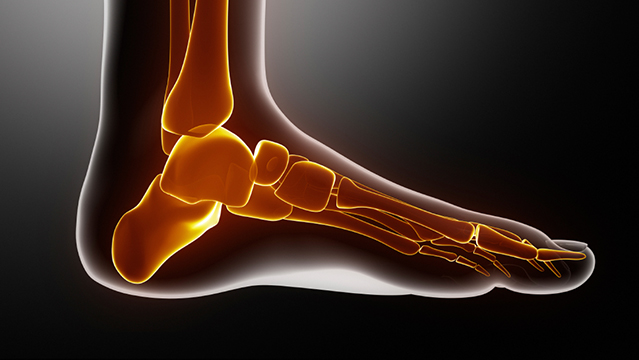
Contact Us
Bunion
Bunion
Bunion Surgery
A bunion occurs when the big toe points toward the second toe. This causes a bump to appear on the outside edge of the toe. A bunion is classified as a foot deformity, consisting of both bone and soft tissue. Bunions can become very painful and interfere with everyday activities.
Bunions are most likely to develop when feet are repeatedly squeezed into narrow footwear. The big toe pushes against the other toes, resulting in the base of the big toe (the metatarsophalangeal MTP joint) pointing out from the foot. Bunions are 10 times more likely to appear in women than in men, likely because high heels tend to intensify the problem because they tip the body’s weight forward, forcing the toes into the front of the shoe.

Bunion Symptoms:
- • Red and/or thickened skin along the inside edge of the big toe
- • A bony bump on the edge of the big toe
- • Pain surrounding the joint (pressure from shoes may make it worse)
- • The big toe turned toward the others, often crossing over the second toe
Bunion Removal Surgery is a procedure that corrects the deformed area near the big toe. The aim of surgery is to alleviate pain and restore normal function to the foot by eliminating the bony protuberance and realigning the joint (including ligaments, tendons, and nerves). Bunion removal is also sometimes referred to as Bunionectomy or Hallux Valgus Correction. If alternative treatment methods fail and a patient still suffers from pain that interferes with daily activities, surgery may be required to restore the toe to its normal position. For patients who experience pain even after making lifestyle changes, such as wearing more comfortable shoes rather than high heels or using cushion pads, they may choose to undergo Bunion Removal Surgery as an effective treatment method.
Bunion removal surgery is often performed as an outpatient procedure, meaning that you go home within a few hours following completion of the surgery. The surgeon will determine how long you should stay in the center before being discharged. It is important to carefully follow directions provided by your doctor in order for proper healing.
Patients must stay off their foot for at least 6 to 12 weeks. Complete recovery can take a year or more, depending on the severity of the procedure. As with any surgery, there may be complications following the procedure, and these should be discussed during a pre-op consultation.
Hammertoe Surgery
Heel Spur Treatments
Podiatrist
Foot and Ankle Surgery
Bone Spur Treatment













